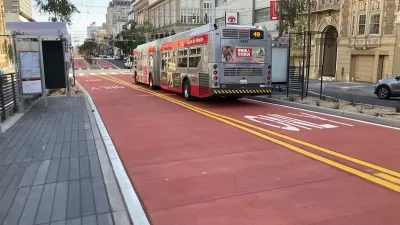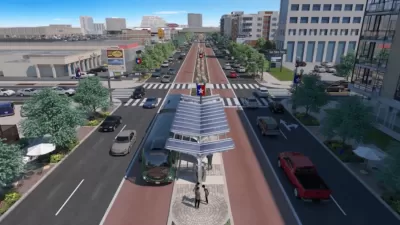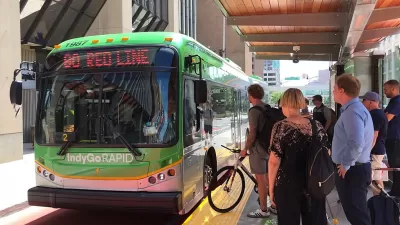More changes are coming to Manhattan as auto-space yields to bus-space on First and Second Aves. Will transit users comply with the honor system as boarding will take place from all three doors? The lanes will be 'terra-cotta brown' without barrier.
Expected to reduce travel times by as much as 20% and costing a mere $10 million, this could be the most cost-effective transit improvement the Big Apple has ever seen.
"The plan, to be announced on Monday, represents the latest move by the Bloomberg administration to siphon away space from private automobiles in favor of other forms of transport. Once dominated by trucks, cars and taxicabs, First and Second Avenues will now gain cycling lanes and concrete pedestrian islands, as well as a bus route meant to function more like a subway."
"Starting in October, buses will be granted an exclusive lane to speed up travel on those avenues from Houston Street to 125th Street, a trip that can last an hour and a half - the length of an Amtrak ride from Pennsylvania Station to Philadelphia.
Tickets will be sold at sidewalk kiosks, allowing passengers to board without stopping to fumble for change or a MetroCard.
Riders will be on the honor system: passengers will not have to produce a ticket unless asked. (A $100 fine awaits the dishonest.) And the buses will be equipped with three doors for quicker boarding and exiting."
Thanks to NYT: My Alerts: commuting-transit
FULL STORY: Bus Lanes to Quicken Commute on East Side

Planetizen Federal Action Tracker
A weekly monitor of how Trump’s orders and actions are impacting planners and planning in America.
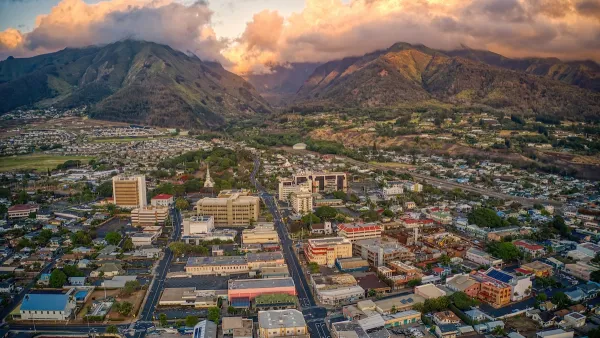
Maui's Vacation Rental Debate Turns Ugly
Verbal attacks, misinformation campaigns and fistfights plague a high-stakes debate to convert thousands of vacation rentals into long-term housing.
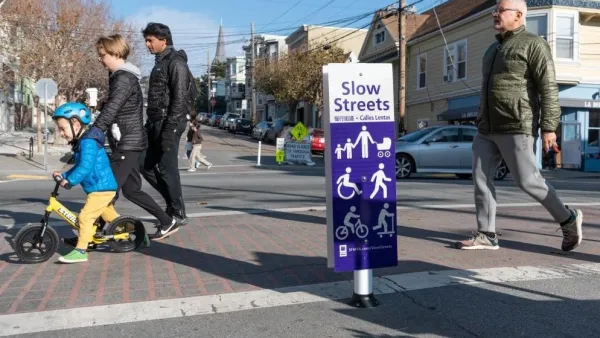
San Francisco Suspends Traffic Calming Amidst Record Deaths
Citing “a challenging fiscal landscape,” the city will cease the program on the heels of 42 traffic deaths, including 24 pedestrians.

Amtrak Rolls Out New Orleans to Alabama “Mardi Gras” Train
The new service will operate morning and evening departures between Mobile and New Orleans.

The Subversive Car-Free Guide to Trump's Great American Road Trip
Car-free ways to access Chicagoland’s best tourist attractions.

San Antonio and Austin are Fusing Into one Massive Megaregion
The region spanning the two central Texas cities is growing fast, posing challenges for local infrastructure and water supplies.
Urban Design for Planners 1: Software Tools
This six-course series explores essential urban design concepts using open source software and equips planners with the tools they need to participate fully in the urban design process.
Planning for Universal Design
Learn the tools for implementing Universal Design in planning regulations.
Heyer Gruel & Associates PA
JM Goldson LLC
Custer County Colorado
City of Camden Redevelopment Agency
City of Astoria
Transportation Research & Education Center (TREC) at Portland State University
Jefferson Parish Government
Camden Redevelopment Agency
City of Claremont


























